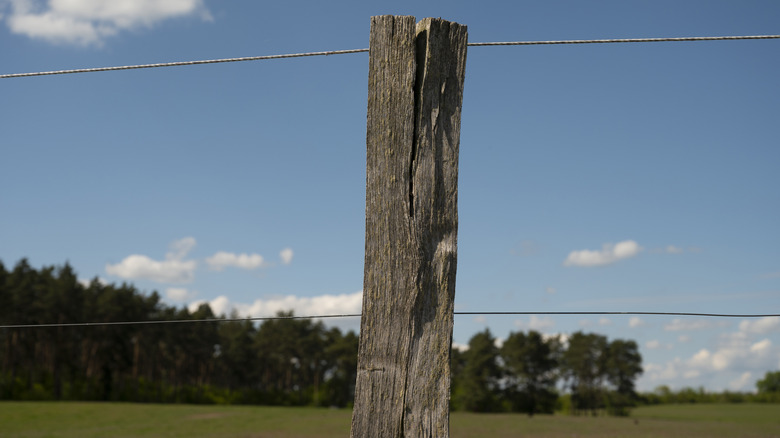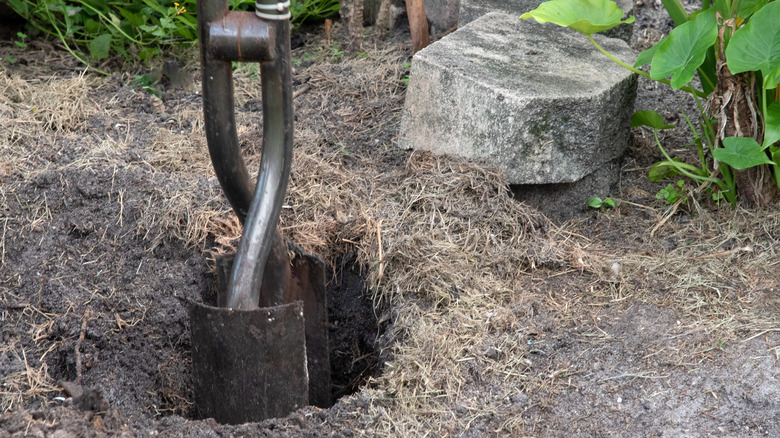Make Installing A Fence In Your Yard Easier With This Handy Tool
We may receive a commission on purchases made from links.
Putting up a fence sounds simple until you get to digging holes for the posts. Using a regular shovel might work for smaller jobs, but when dealing with multiple posts or tough ground, you need a tool that makes the work easier. That's where a post hole digger can come in handy.
A post hole digger — or auger — helps create uniform, deep holes with much less effort than traditional tools. Unlike shovels, which require a lot of physical work and can leave uneven openings, post hole diggers drill straight down, making them perfect for properly securing fence posts. Because fences can be expensive – sometimes costing $50 per linear foot — getting this right is important. Speed is another major benefit. Digging by hand can take hours, especially in rocky or compacted soil. A powered post hole digger dramatically reduces the time needed to dig. A key advantage over post drivers (which also speed up fence installment) is that a post hole digger works in all soil types, including hard-packed or rocky ground, where driving a post might be nearly impossible. Plus, they're easy to transport and they save on concrete wastage.
Beyond saving effort and time, a post hole digger helps prevent installation mistakes. Uneven holes can cause a fence to lean (which is a telltale sign your fence needs replacing), weakening its structure. Using the right tool ensures every hole is even, leading to a straight, professional-looking fence that stands strong for years.
Picking the best pole hole digger for your project
Not all pole hole diggers are created equal, and selecting the right one depends on a few key factors. First, consider the type of soil in your yard. If you're working with soft, loose dirt, a manual post hole digger might be sufficient. For example, you could try a JCB Professional Fence Post Auger. However, for clay-heavy or rocky ground, a gas-powered auger will cut through more efficiently and save you from exhausting manual labor. For this, you could try a DNYSYSJ Gas Powered Earth Auger.
Next, think about the scale of your project. A small backyard fence with only a handful of posts may not justify the investment of a high-powered digger. However, if you're fencing an entire property or working on multiple projects, renting or purchasing a powered auger can be a game-changer. Another factor to keep in mind is hole size. Standard fence posts typically require holes about three times the width of the post itself and at least one-third of the post length deep. Pole hole diggers come in various bit sizes, so ensure you choose one that matches your specific needs. Adjustable or interchangeable bits can be a great option if you're working with different post sizes.
Finally, consider ease of use. While gas-powered augers are powerful, they can also be heavy and difficult to maneuver. Electric models (such the VASGOR Set of 3 Auger Drill Bit), offer a lighter-weight alternative with less maintenance, though they may not have the same level of power.

